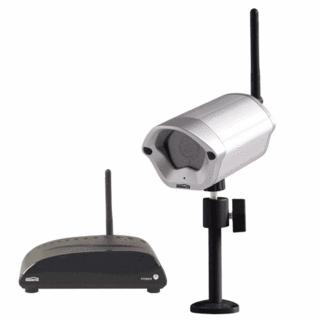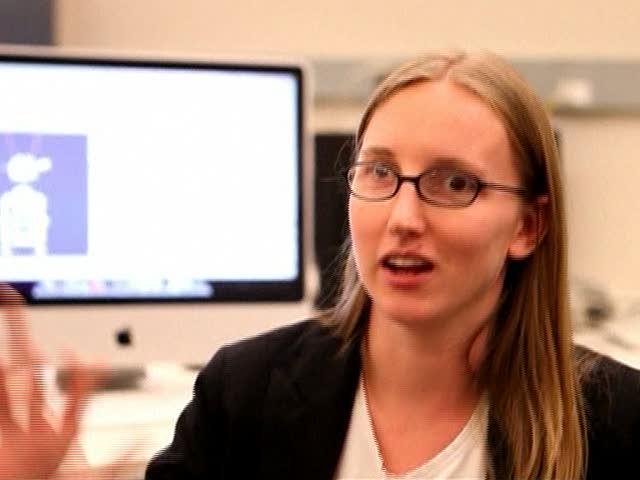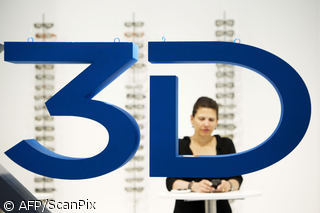Researchers use nuclear magnetic resonance in experiment.
Published:
6 July 1999 y., Tuesday
D. Cory of the Massachusetts Institute of Technology, Raymond Laflamme of Los Alamos National Laboratory and colleagues report that have come up with a general scheme for quantum simulation that would work on any quantum computer. In a paper in the June 28 issue of Physical Review Letters, the researchers say they demonstrated the scheme on a liquid-state nuclear magnetic resonance quantum computer developed at MIT. The possible applications of quantum computing techniques have been studied since the 1980s. But the field took off in earnest only in 1994, when AT&T mathematician Peter Shor discovered that quantum computing could efficiently find the prime factors of large numbers. Such prime factorization could provide a method for cracking some of the most widely used methods for encrypting sensitive data. Around the same time, Seth Lloyd, associate professor of mechanical engineering at MIT, proposed that a quantum computer could be built from an array of coupled two-state quantum systems, each of which can store one quantum bit, or qubit. Cory_s research group, and Neil Gershenfeld and colleagues in MIT_s Artificial Intelligence Laboratory, with Isaac Chuang at IBM, independently helped develop the quantum computer. At the moment, quantum computers don_t possess the calculating power of a pocket calculator. But quantum computing has the potential to surpass conventional computing techniques in power and efficiency. Because quantum mechanics allows a quantum computer_s components to represent many states simultaneously, it should be able to perform many computations simultaneously. A quantum computer may be able to solve quickly problems involving weather prediction and fluid flow - problems so big they couldn_t be stored in a conventional computer_s memory.
Šaltinis:
Internet
Copying, publishing, announcing any information from the News.lt portal without written permission of News.lt editorial office is prohibited.
The most popular articles
Software company announced new structure_ of it_s business.
more »
 Just a few weeks ago, the world's tiniest video camera was as small as a grain of rice. Today, the world's NanoEst camera is even smaller.
more »
Just a few weeks ago, the world's tiniest video camera was as small as a grain of rice. Today, the world's NanoEst camera is even smaller.
more »
 During the experiment two research groups managed to overcome a symbolic 100 TB/s optical fiber data transmission speed limit.
more »
During the experiment two research groups managed to overcome a symbolic 100 TB/s optical fiber data transmission speed limit.
more »
 Apple’s long–awaited online storage service for iTunes could be named iCloud, if only rumours are to be believed.
more »
Apple’s long–awaited online storage service for iTunes could be named iCloud, if only rumours are to be believed.
more »
 The founders of video-sharing site YouTube have bought bookmarking service Delicious from Yahoo.
more »
The founders of video-sharing site YouTube have bought bookmarking service Delicious from Yahoo.
more »
 The successful raid by hackers on Sony’s PlayStation Network is already being ranked among the biggest data thefts of all time.
more »
The successful raid by hackers on Sony’s PlayStation Network is already being ranked among the biggest data thefts of all time.
more »
 Apple has denied that its iPhones and 3G iPads have been secretly recording their owners' movements.
more »
Apple has denied that its iPhones and 3G iPads have been secretly recording their owners' movements.
more »
 Customers who have waited nearly 10 months for the white version of the iPhone 4 won’t have to wait much longer. The Great White iPhone 4 is finally here.
more »
Customers who have waited nearly 10 months for the white version of the iPhone 4 won’t have to wait much longer. The Great White iPhone 4 is finally here.
more »
 Researchers at Georgia Tech University are teaching a robot the basics of dialogue. Named "Simon", the robot has already been taught how to attract a person's attention but eventually, it's hoped he'll be able to interact and converse with humans in daily life.
more »
Researchers at Georgia Tech University are teaching a robot the basics of dialogue. Named "Simon", the robot has already been taught how to attract a person's attention but eventually, it's hoped he'll be able to interact and converse with humans in daily life.
more »
 3D? Terribly lame when it's tossed into devices as a bullet point feature. Trimensional for iPhone takes a picture of your face and maps your mug in a 3D model.
more »
3D? Terribly lame when it's tossed into devices as a bullet point feature. Trimensional for iPhone takes a picture of your face and maps your mug in a 3D model.
more »
 The European Union is to investigate whether internet service providers (ISPs) are providing fair access to online services.
more »
The European Union is to investigate whether internet service providers (ISPs) are providing fair access to online services.
more »